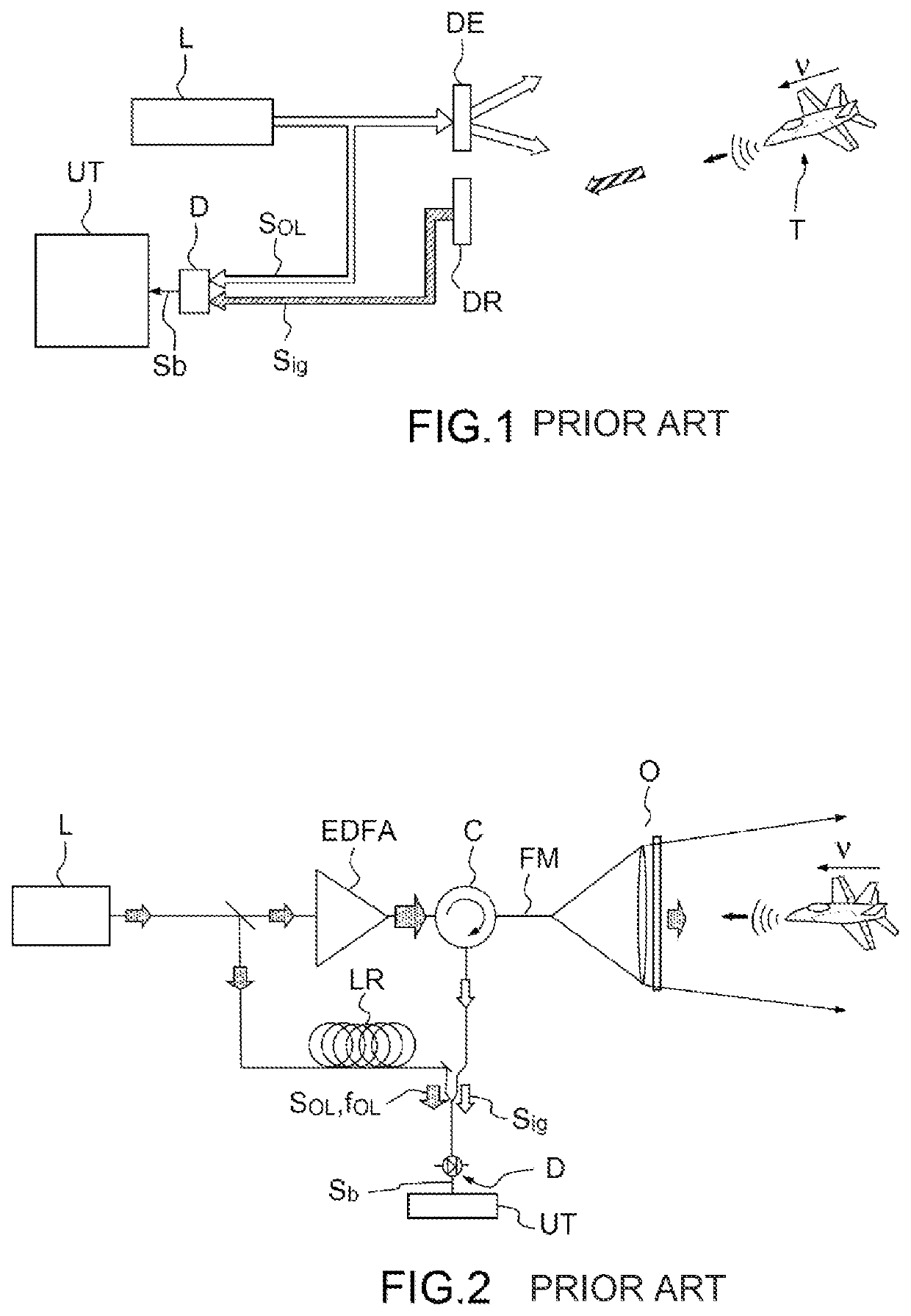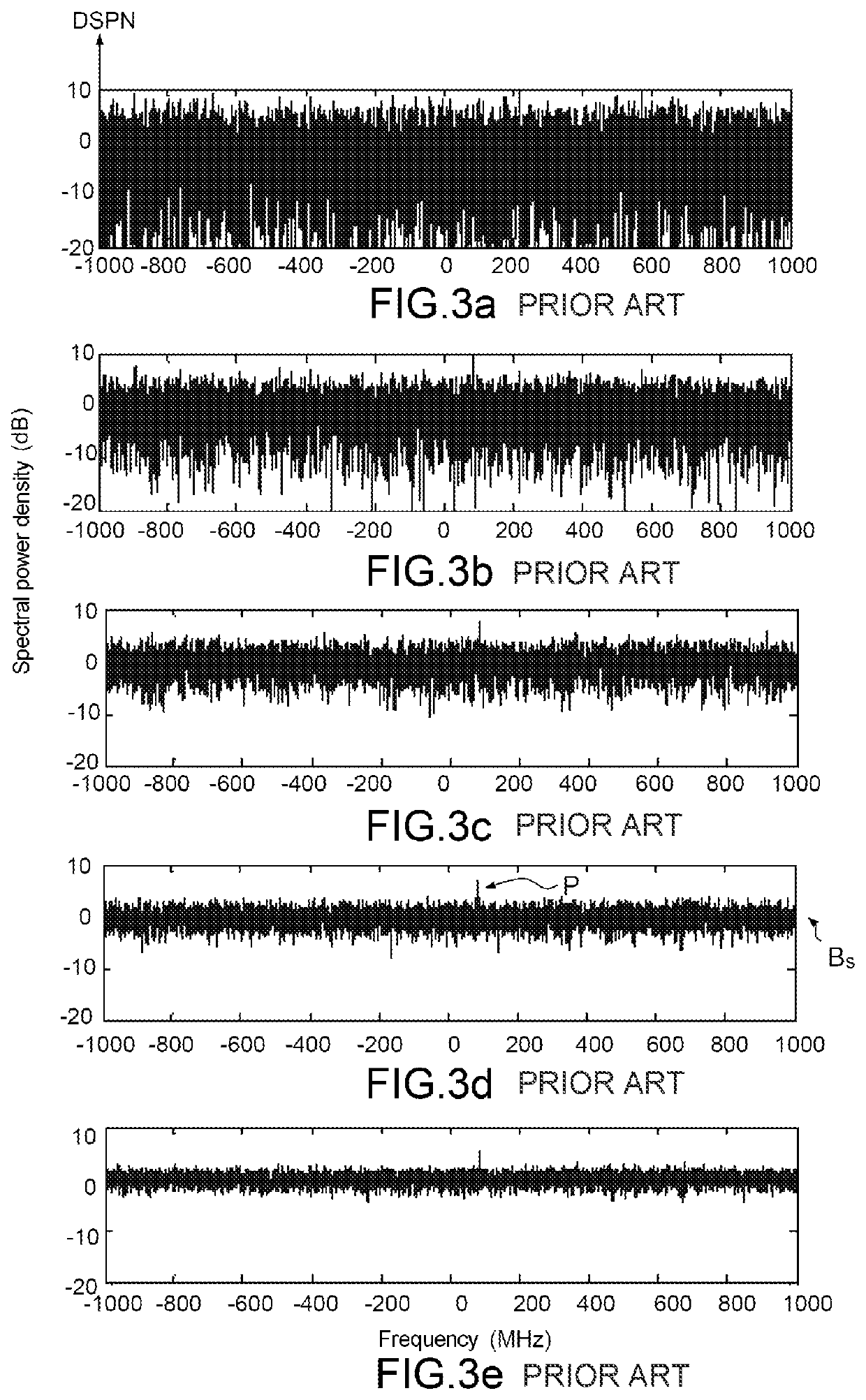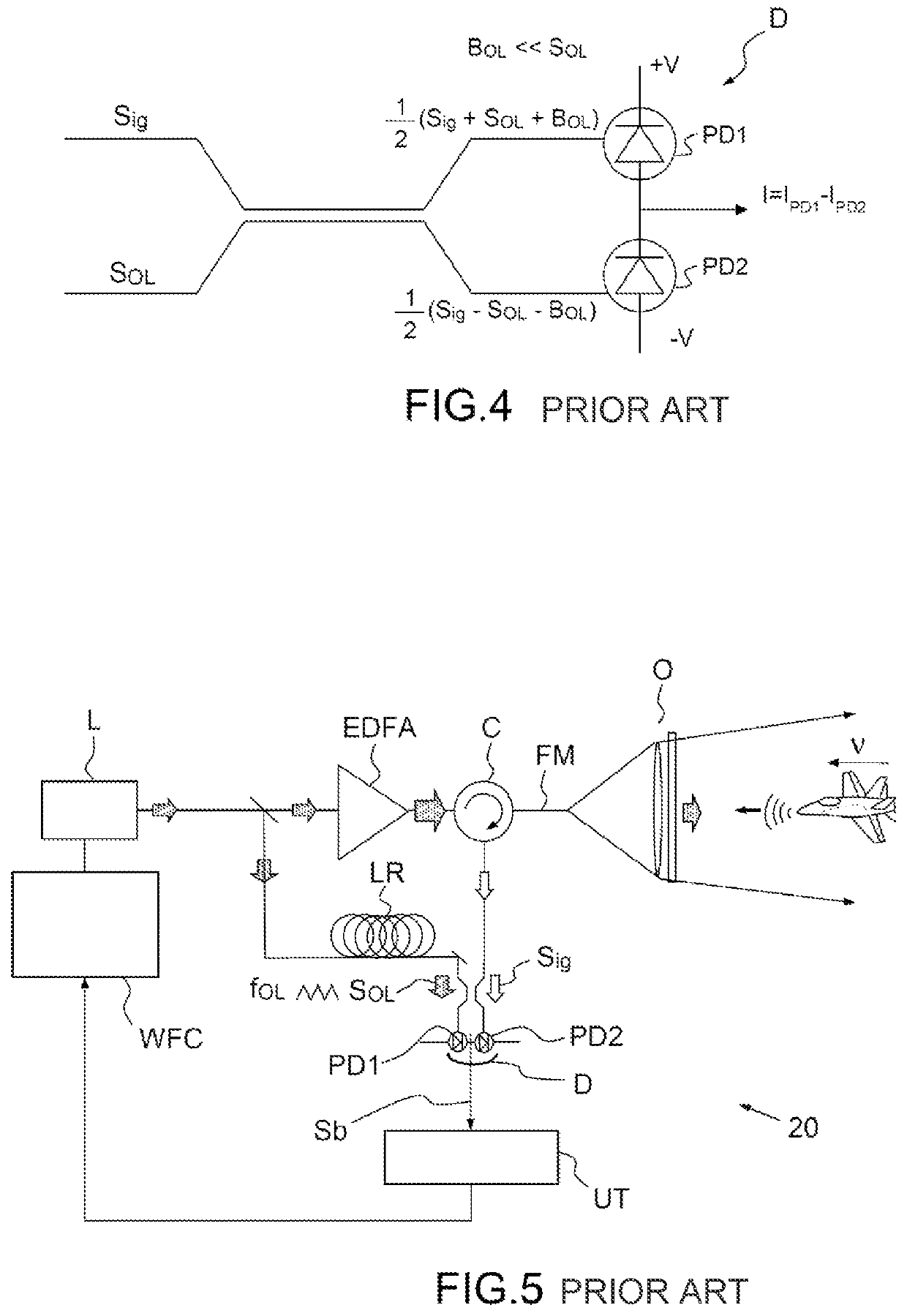Method for processing a signal from a coherent lidar in order to reduce noise and related lidar system
a lidar and signal processing technology, applied in the field of coherent lidars, can solve the problems of reducing the sensitivity of the lidar, reducing the power, and reducing the intensity
- Summary
- Abstract
- Description
- Claims
- Application Information
AI Technical Summary
Benefits of technology
Problems solved by technology
Method used
Image
Examples
Embodiment Construction
[0083]Before describing the invention we will recall certain mathematical concepts known to those skilled in the art and required for a good comprehension of the invention.
[0084]The Fourier transform FT of a time-dependent function S(t) is defined, e.g. transform to the frequency domain:
FT[S(t)]=∫−∞+α1S(t).exp(−2iπvt)dt
[0085]The product of convolution of two complex time-dependent functions S1(t) and S2(t) is defined as:
S1*S2=∫−∞+∞S1(τ).S*2(t−τ)dτFT[S1(t)*S2(t)]=FT[S1(t)].FT[S2(t)]
[0086]S being a complex number:
S=Re(S)+iIm(S) and S*=Re(S)−iIm(S)
[0087]The cross-correlation function of S1 and S2 is also defined:
CS1S2=S1(t)⊗S2(t)=∫−∞+∞S1(t).S*2(t−τ)dt=∫−∞+∞S1(t+τ).S*2(t)dt (1)
and its Fourier transform:
FT[CS1S2(τ)]=FT[S1(t)*S*2(−t)]=FT[S1(t)]×FT[S*2(−t)]=FT[S1(t)]×{FT[S2(t]}* (2)
[0088]The correlation function is maximum when S1 and S2 are identical to within a time shift. CS1S2 is then maximum for a value of τo corresponding to this shift.
[0089]The method 80 for processing a signal...
PUM
 Login to View More
Login to View More Abstract
Description
Claims
Application Information
 Login to View More
Login to View More - R&D
- Intellectual Property
- Life Sciences
- Materials
- Tech Scout
- Unparalleled Data Quality
- Higher Quality Content
- 60% Fewer Hallucinations
Browse by: Latest US Patents, China's latest patents, Technical Efficacy Thesaurus, Application Domain, Technology Topic, Popular Technical Reports.
© 2025 PatSnap. All rights reserved.Legal|Privacy policy|Modern Slavery Act Transparency Statement|Sitemap|About US| Contact US: help@patsnap.com



